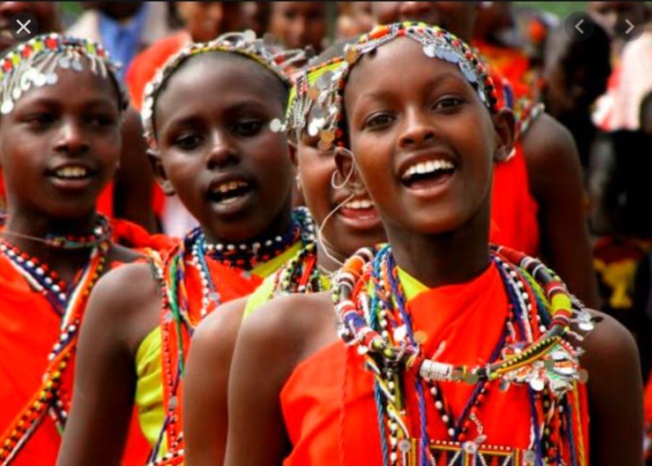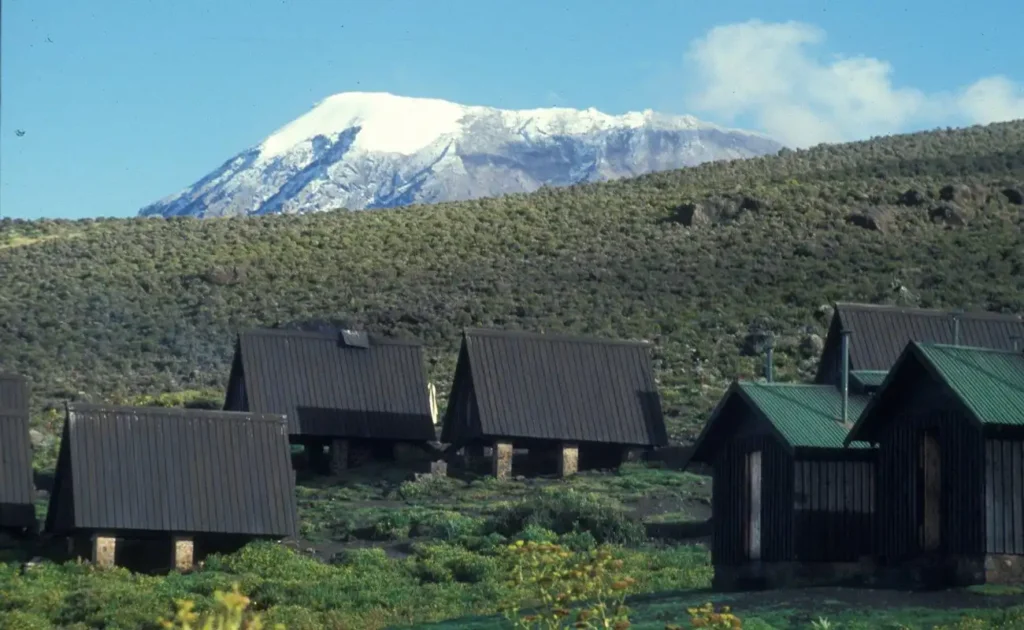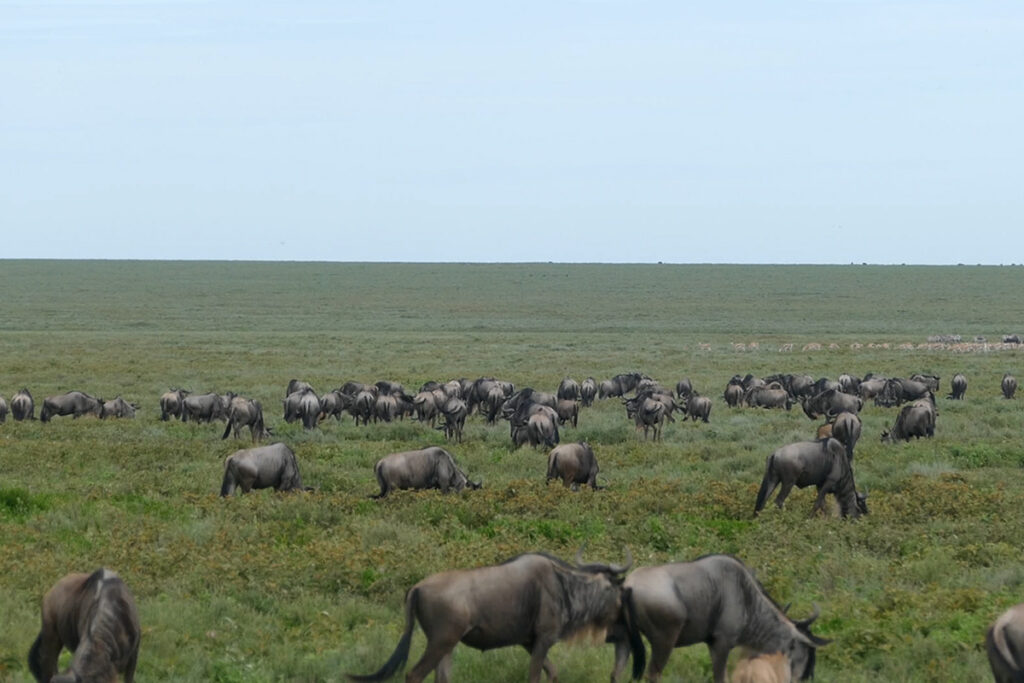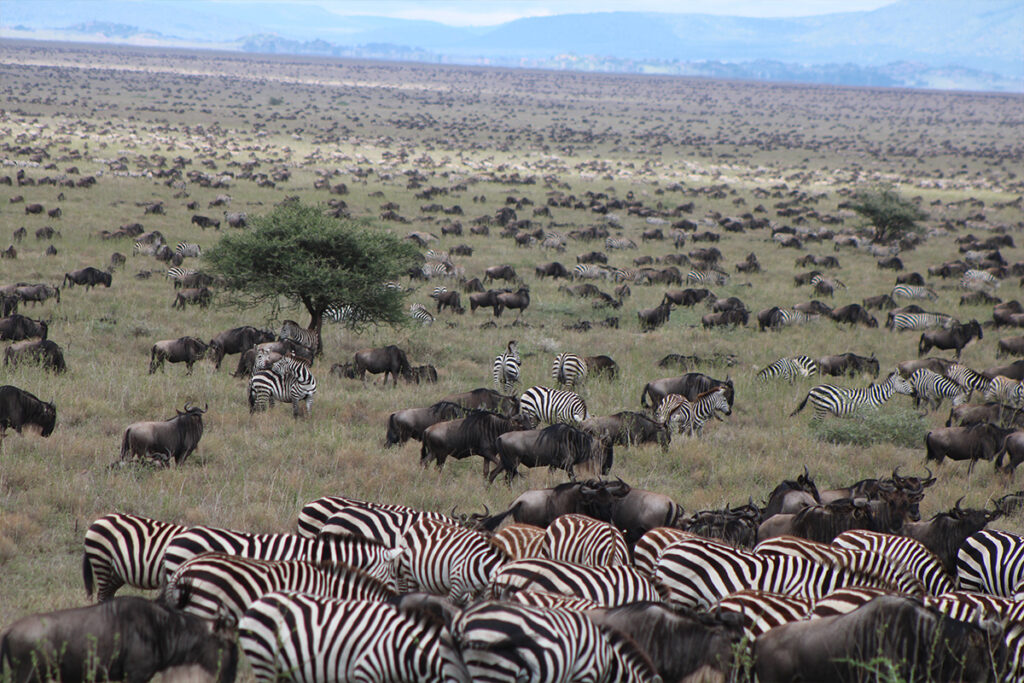The Sukuma tribe, one of Tanzania’s largest ethnic groups, holds a unique cultural tapestry that often surprises onlookers with its vibrant blend of past and present traditions. Participating in fascinating ceremonies that date back centuries, this community thrives on a deeply rooted connection with nature and ancestral wisdom. Their lifestyle is an emblem of resilience and adaptation, seamlessly blending tradition with contemporary influences.
Originating from the northwestern region of Tanzania, the Sukuma have expertly balanced modernity with their rich cultural heritage, maintaining harmony in their agricultural and spiritual practices. As custodians of the land, where more than 70% engage in farming, they showcase agriculture’s enduring significance in their society. Engaging in traditional healing and music, the Sukuma offer profound insights into Tanzania’s diverse cultural landscape.

Sukuma Tribe: Traditions and Way of Life in Tanzania
The Sukuma tribe, the largest ethnic group in Tanzania, boasts a rich cultural heritage that captivates many. Their history spans centuries, with roots deep in the Tanzanian plains. The tribe’s name, Sukuma, means “north” in Swahili, reflecting their original migration patterns. Community life is centered around agriculture and livestock, which remain integral to their survival. This bond with the land offers both sustenance and a cultural identity.
Traditional rituals and ceremonies play a crucial role in Sukuma culture. From birth to death, every life stage is marked by important rites of passage. One notable ceremony is the annual Bulabo dance, celebrating successful harvests and fostering community spirit. According to this post, such events are vital in preserving cultural continuity amidst modern influences. These ceremonies reinforce social bonds and uphold ancient customs.
The Sukuma’s connection to nature is evident in their agricultural practices and traditional medicine. They grow crops like millet, maize, and rice, adapting techniques to the changing climate. Livelihoods are sustained through farming, reflecting the tribe’s resilience and innovation. Healers in the community use herbal medicine, showcasing their extensive knowledge of local flora. This integration of nature and culture highlights the tribe’s harmonious existence.
Music and dance are powerful forms of expression within Sukuma society. Traditional instruments include drums and flutes, each producing distinct sounds that echo through the village. Festivals and gatherings often feature the playful ngoma dance, involving elaborate costumes and intricate moves. The arts serve not just as entertainment but also as a way to pass down history and values. According to here is the article, these performances help maintain and transmit the Sukuma’s cultural legacy.
African Tribe Hidden story of the SUKUMA People
Tracing the History of the Sukuma Tribe
The Sukuma tribe, deeply rooted in Tanzania, has a history that stretches back several centuries. Originally, the Sukuma settled in the northern regions of Tanzania. Their movement was primarily driven by the search for fertile land, which was essential for agriculture. Over time, their settlements expanded, forming numerous villages. This early history laid the foundation for their strong agricultural traditions.
As with many indigenous groups, oral traditions play a crucial role in preserving Sukuma history. Elders pass down stories and myths, helping young generations understand their ancestors’ lives. These tales often reveal insights into cultural norms and societal changes. They serve as a living record that keeps tribal history alive. This tradition of storytelling is central to the tribe’s identity.
The 19th century brought significant changes to the Sukuma people. Contact with Arab traders introduced new cultural influences and trade opportunities. Alongside this, European colonization impacted the region, altering traditional practices. Despite these external pressures, the Sukuma managed to retain their cultural essence. Their resilience is evident in how they adapted without losing core values.
Modern Sukuma society reflects a blend of historical influences. Today, they navigate between preserving age-old traditions and engaging with contemporary developments. Education and technology have created new opportunities, especially for the younger generation. However, the tribe remains committed to passing on their heritage. This balance of the old and new defines the Sukuma tribe’s unique place in Tanzania.
Exploring the Culture and Traditions of the Sukuma
The Sukuma people’s culture is rich and deeply intertwined with their daily lives. Traditional music and dance are vital expressions, often performed during ceremonies and celebrations. Instruments like the ng’oma drum and the zeze fiddle create vibrant rhythms. Each dance tells a unique story, passing down historical events to younger generations. Dance is more than entertainment; it’s a connection to their past.
Artistry and craftsmanship are central to Sukuma traditions. Skilled artisans create intricate beadwork and textiles, each piece reflecting cultural symbols and meanings. Women play a significant role in crafting these items, weaving stories into fabric patterns. Through these crafts, cultural values and history are preserved. Artisan skills are an integral legacy shared across generations.
Religious beliefs and practices are also fundamental to the Sukuma. They recognize ancestral spirits and believe in their influence on the living. Rituals and prayers are conducted to honor these spirits and seek their guidance. This relationship with the spiritual world shapes the tribe’s worldview. It ensures that cultural traditions coexist with spiritual practices.
The role of community cannot be overstated in Sukuma culture. Social gatherings are common, solidifying bonds among tribe members. Decisions about community matters are made collectively, emphasizing unity and cooperation. Communication within the tribe fosters mutual respect and understanding. This communal approach underscores the importance of teamwork and solidarity in their way of life.
Understanding the Sukuma’s Connection to Nature
The Sukuma tribe has a profound connection to nature, influencing many aspects of their daily life. Their livelihoods depend heavily on agriculture, making them keenly aware of weather patterns and soil quality. Farming practices are carefully adapted to suit the land, balancing efficiency and sustainability. This relationship is not just practical but also spiritual, as the tribe views the earth as a living entity. Their respect for nature is evident in their cultivation methods.
Traditional beliefs intertwine with the Sukuma’s interaction with the environment. Nature holds a sacred place in their mythology, and certain trees and animals are revered. These beliefs translate into conservation practices that help preserve biodiversity. Elders often teach younger generations about the interconnectedness of all living things. Through these lessons, respect for nature is instilled across the community.
The medicinal use of local plants is another significant aspect of their nature-based practices. Sukuma healers rely on indigenous knowledge passed down through generations to treat illnesses. They utilize herbs and roots found in their surroundings, demonstrating an intimate understanding of the region’s flora. This traditional medicine coexists with modern treatment methods, offering valuable health solutions. Utilizing natural resources responsibly underscores their commitment to environmental harmony.
Community life is closely linked to seasonal cycles, highlighting the tribe’s dependence on natural rhythms. Festivals and rituals are often timed with the agricultural calendar, celebrating planting and harvest moments. These events also serve as a reminder of nature’s bounty and their dependence on it. By honoring these cycles, the Sukuma reinforce their deep respect for the environment. Such practices lead to a sustainable lifestyle that is both celebratory and practical.
Challenges arise as modern life encroaches on traditional ways, yet the Sukuma strive to maintain their bond with the natural world. Education and awareness initiatives are being developed to address environmental issues. By integrating traditional wisdom with new ideas, they aim to protect their heritage while embracing progress. This blend of old and new ensures that their nature-centric values remain relevant. The Sukuma tribe’s enduring connection with nature is a testament to their adaptability and respect for the earth.
The Role of Agriculture in the Sukuma Lifestyle
Agriculture is the heartbeat of the Sukuma tribe, shaping their day-to-day activities and economic framework. The vast plains of northwestern Tanzania offer fertile soil that the Sukuma efficiently utilize for cultivating staple crops. Primary crops include maize and sorghum, essential for both consumption and trade. Farming methods are often traditional, combining ancestral knowledge with sustainable practices. This agricultural foundation plays a pivotal role in their overall sustenance.
Elders and family members pass down farming techniques through generations, ensuring that the land is respected and maintained.
- Soil management
- crop rotation
- natural pest control
are vital components of their farming philosophy. These practices reflect a deep understanding of environmental balance. By adhering to such methods, the Sukuma promote long-term agricultural viability. It protects both their heritage and their future.
Livestock, particularly cattle, complement crop cultivation, providing meat, milk, and labor. Cattle are highly valued, symbolizing wealth and social status among the tribe. The Sukuma often engage in cattle herding, adapting to seasonal changes that affect grazing lands. By integrating livestock with agriculture, they enhance food security and create diverse resources. This blend of farming and herding strengthens their community structure.
Markets within and beyond their locality offer opportunities to trade surplus produce. This helps sustain the tribe economically while building ties with neighboring communities. Through trade, the Sukuma exchange goods, sharing their agricultural bounty and fostering regional relationships. Social bonds are strengthened through these interactions, ensuring cooperation and mutual support. Engaging in commerce enriches their social and economic landscapes.
Education is gradually influencing their approach to agriculture, with younger generations learning about innovation. New techniques and technologies are being introduced to improve yield and efficiency. Schools and community programs focus on blending traditional methods with modern advancements. By embracing technology, the Sukuma demonstrate adaptability while preserving core values. This balanced approach positions them well for future challenges and opportunities.
How Sukuma Tribe’s Traditions Influence Today’s Generation
Today’s younger generation of the Sukuma tribe finds deep roots in their ancestral traditions, even as they navigate modern life. Elements of their cultural heritage, such as storytelling and dance, remain integral to their identity. These traditions offer a sense of belonging and connection to their history. Younger members actively participate in ceremonies and festivals, linking them to their past. This active participation ensures cultural continuity.
Modern education also incorporates Sukuma traditions, allowing children to learn about their heritage in schools. Lessons on traditional farming methods, language, and rituals are part of the curriculum. This approach supports cultural preservation while providing academic knowledge. Integration of traditional and modern education equips the youth with diverse skills. By valuing both, they honor their heritage and prepare for the future.
Technology offers new ways to preserve and share Sukuma culture. Social media and online platforms are used to document and showcase traditional practices. Recordings of dances, songs, and stories are accessible to a global audience. This not only preserves these practices but also educates others about the Sukuma way of life. It creates a bridge between the traditional community and the digital world.
Despite global influences, family remains a cornerstone of Sukuma society. Values such as respect for elders and community cooperation are upheld by the younger generation. Through family gatherings and community events, these values are reinforced. Maintaining strong family bonds ensures the transmission of cultural principles. These gatherings are essential in teaching responsibility and social cohesion.
The Sukuma youth are finding creative ways to blend tradition with modernity. They innovate in agriculture, using new techniques while respecting traditional methods. In arts, they mix contemporary styles with traditional forms of expression. This fusion creates a vibrant, dynamic culture that evolves while staying true to its roots. By balancing both worlds, the younger generation continues to shape the Sukuma identity.
Sukuma Music and Dance: A Powerful Form of Expression
Music and dance are deeply woven into the fabric of Sukuma culture, serving as powerful tools for expression and storytelling. Their vibrant rhythms and movements go beyond mere entertainment. They connect generations, passing down traditions while celebrating life events. Dance styles are unique, featuring intricate steps that convey emotions and historical tales. This art form is an essential component of community gatherings.
The instruments used in traditional Sukuma music include the ng’oma drum and local string instruments such as the zeze. These create compelling soundscapes that drive the energy of performances.
- Drums set a steady rhythm
- fiddles add melodic lines
- flutes provide harmony
. Each instrument has a role, coming together to form a captivating musical ensemble. This collaboration illustrates unity within diversity in their artistic expression.
Ceremonial dances reflect various aspects of Sukuma life, from showcasing agricultural practices to celebrating harvests. Each dance holds cultural significance, often tied to spiritual beliefs or social functions. During these performances, participants may don colorful costumes adorned with beads or feathers. Such embellishments add visual beauty while symbolizing themes like fertility or prosperity. Through dance, important values and narratives are vividly showcased.
Younger generations continue to keep these traditions alive by participating in village festivals and competitions. They learn from elders who teach them the precise movements and rhythms passed down from predecessors. Engaging with music and dance helps them understand their heritage in an interactive way. It also promotes creative expression among youth, encouraging pride in their cultural identity. In this way, ancient practices remain relevant today.
The influence of Sukuma music extends beyond borders as it gains recognition on global stages. Performances at international festivals introduce wider audiences to their rich artistic legacy. As more people discover these enchanting sounds and movements, appreciation for their cultural depth grows worldwide. This exchange fosters cross-cultural understanding while elevating the Sukuma’s global presence in performing arts circles.

Frequently Asked Questions
Here are some common questions and answers about the Sukuma tribe, their traditions, and their way of life in Tanzania. Understanding these aspects provides insight into their rich cultural heritage and practices.
1 How does the Sukuma tribe celebrate their festivals?
The Sukuma tribe celebrates festivals with vibrant music, dance, and traditional ceremonies. During these events, they perform the Bulabo dance, which reflects agricultural prosperity and community unity. Colorful costumes, traditional instruments, and spirited performances highlight their cultural richness and communal spirit. These festivals are crucial for preserving and passing down traditions.
They also serve to strengthen social ties within the tribe and neighboring communities. By engaging in these celebrations, the Sukuma ensure that their cultural values and practices thrive for future generations. Education projects often incorporate festival traditions to teach young people about their heritage. These community gatherings are pivotal in cultural preservation and education.
2 What role does agriculture play in the Sukuma tribe’s lifestyle?
Agriculture is central to the Sukuma tribe’s lifestyle, providing food and economic stability. They primarily grow crops like maize, sorghum, and millet, which are essential for their diet and culture. Farming methods are passed down through generations, emphasizing soil health and sustainability. This agricultural heritage sustains their way of life.
Livestock, particularly cattle, are also important, serving as symbols of wealth and sources of milk and labor. By blending traditional practices with modern techniques, the Sukuma maintain their agricultural legacy while adapting to changing environments. This balance ensures their agricultural practices remain effective and sustainable. Thus, agriculture connects their past to the future.
3 What significance do music and dance hold for the Sukuma tribe?
Music and dance are vital to the Sukuma tribe, serving as expressions of cultural identity and historical narrative. Traditional instruments like the ng’oma drum create rhythmic foundations for their dances. Every performance tells a story, often related to significant events or societal values. These art forms unify the community and preserve traditions.
Younger generations learn these dances and musical techniques from elders, ensuring cultural continuity. Festivals and competitions provide platforms for showcasing their skills and heritage. These performances are not just entertainment but also educational experiences, reinforcing cultural pride and community cohesion. This vibrant cultural expression keeps their traditions alive.
4 How is the Sukuma tribe’s traditional knowledge passed to younger generations?
Traditional knowledge is passed down through oral storytelling, practical instruction, and participation in cultural practices. Elders play a critical role in educating the youth about agricultural techniques, medicinal plants, and historical tales. These teachings are often integrated into everyday activities and special ceremonies. This hands-on approach reinforces learning and cultural connection.
Schools in Sukuma communities also blend modern education with traditional knowledge. Curriculum may include lessons on traditional crafts, farming methods, and cultural values. By combining formal education with traditional teachings, the younger generation stays connected to their heritage while gaining broader knowledge. This dual approach fosters a deep understanding of their culture and its relevance.
5 What challenges does the Sukuma tribe face in preserving their traditions?
The Sukuma tribe faces several challenges in preserving their traditions, including modern influences and environmental changes. Urbanization and globalization can erode traditional practices and lifestyles. Additionally, climate change impacts agriculture, which is integral to their culture. These factors create pressure to adapt while preserving their heritage.
Efforts to preserve traditions include documenting cultural practices and using technology to share their heritage. Community programs and initiatives help maintain and teach cultural values to younger generations. Support from external organizations also aids in these preservation efforts. By balancing adaptation with preservation, the Sukuma strive to keep their culture vibrant and enduring.
Sukuma tribe, Tanzania
Conclusion
The Sukuma tribe of Tanzania showcases a vibrant tapestry of cultural traditions, agricultural practices, and community values. Their rich heritage continues to thrive amidst modern influences, thanks to dedicated efforts in preservation and adaptation. By blending the old with the new, the Sukuma ensure that their cultural identity remains strong and relevant.
Through music, dance, storytelling, and sustainable farming, the Sukuma tribe maintains a deep connection to their roots. Their commitment to passing down knowledge and values to future generations highlights their resilience. This enduring legacy not only enriches their community but also offers valuable insights into sustainable and culturally rich living.



